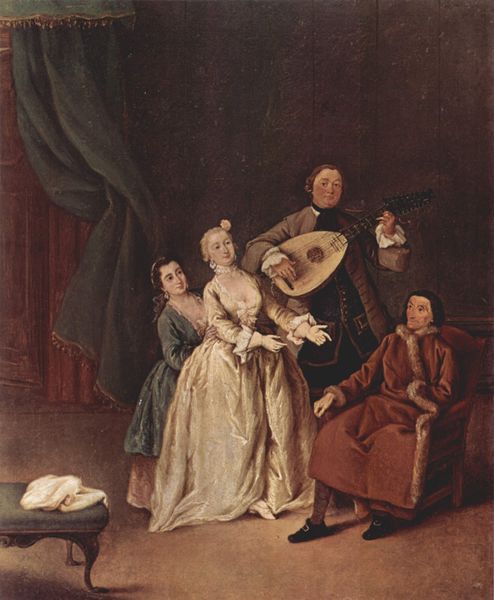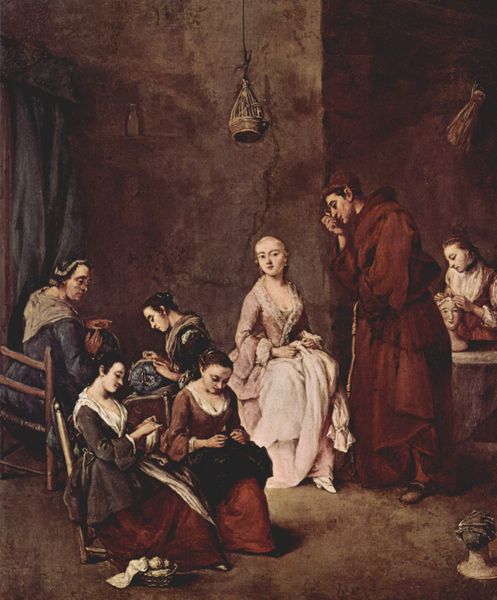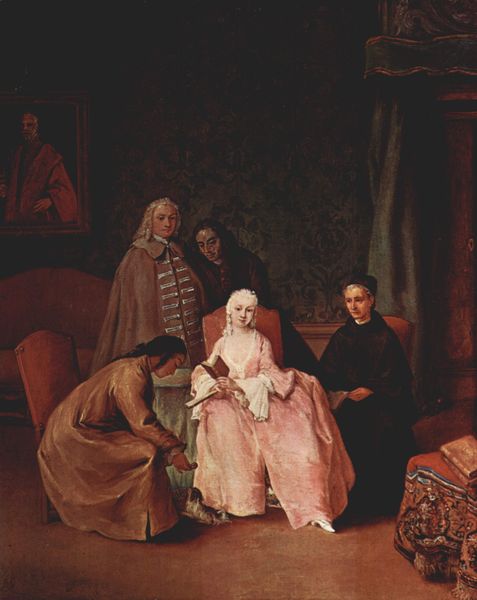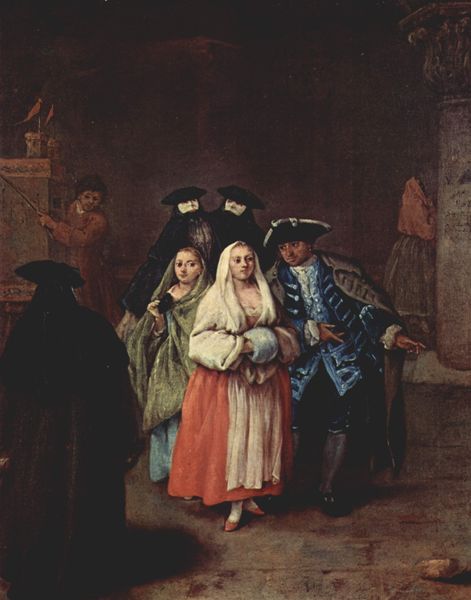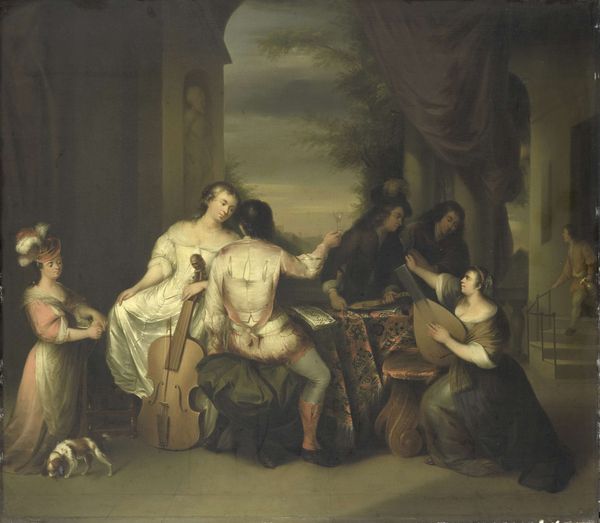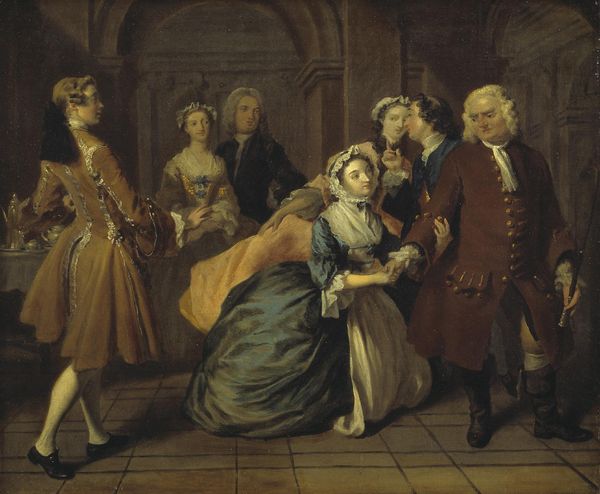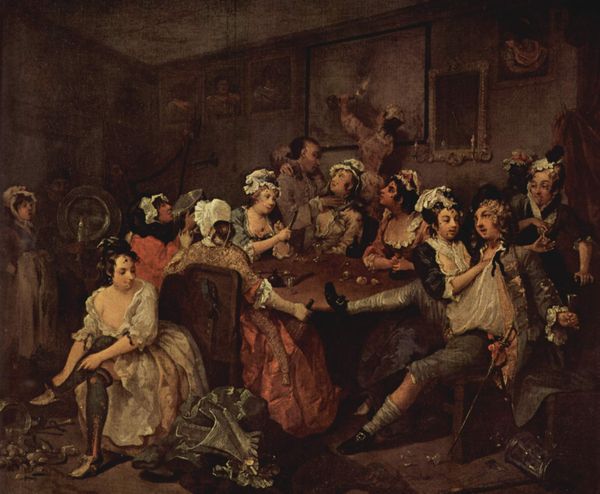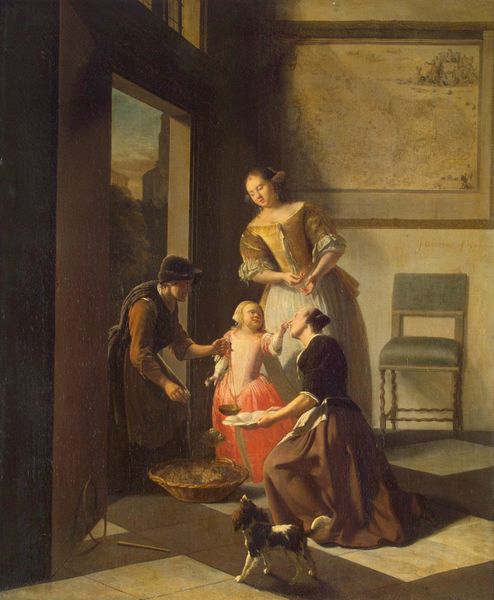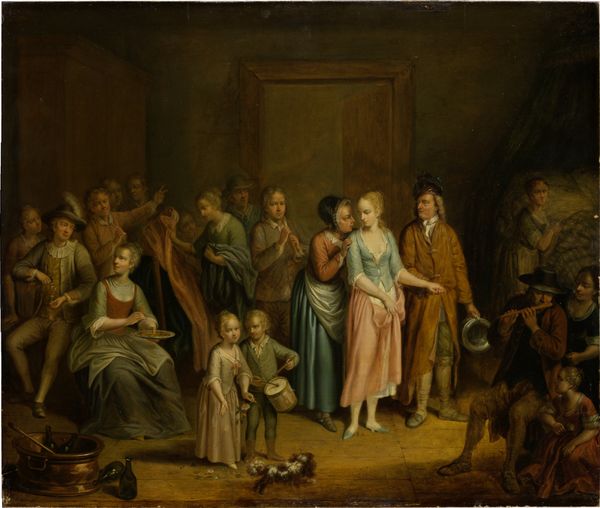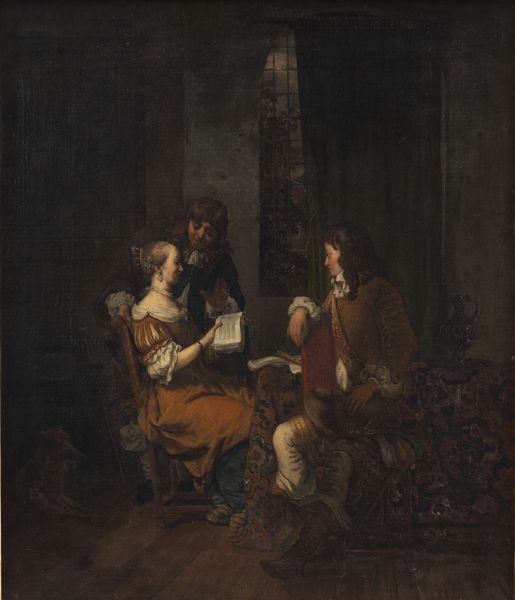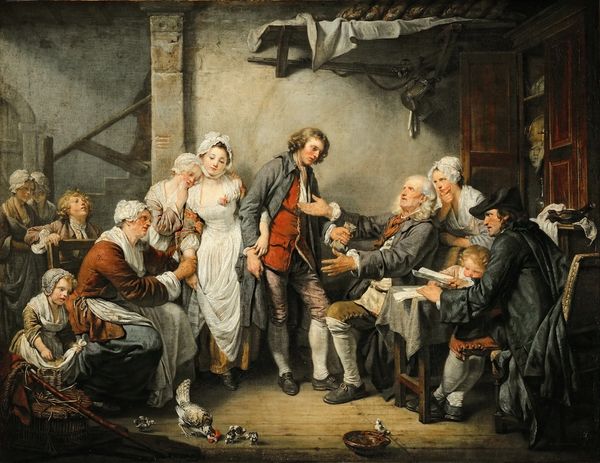
The furlana (Venetian dance)
0:00
0:00
pietrolonghi
Ca' Rezzonico (Museo del Settecento), Venice, Italy
painting
#
portrait
#
baroque
#
painting
#
group-portraits
#
genre-painting
#
rococo
Dimensions: 51 x 62 cm
Copyright: Public domain
Editor: So, this is "The Furlana (Venetian Dance)," a painting by Pietro Longhi, currently housed in Ca' Rezzonico in Venice. What immediately strikes me is the theatricality of the scene. The figures are arranged almost like actors on a stage. How would you interpret its visual elements? Curator: The painting’s strength resides in the artist's deliberate organization of pictorial space. Longhi masterfully balances the composition by positioning the figures into smaller groups. This creates a clear delineation, each existing almost independent, yet collectively contribute to the scene. Observe how the architectural backdrop, devoid of strong linear perspective, pushes the characters forward, flattening the pictorial space. Do you agree with this assessment of spatial compression? Editor: I do. And that compression definitely accentuates the performative quality of the painting. There is such shallow depth and emphasis on figures grouped closely. The viewer almost acts as a play's audience member. What does this emphasis accomplish? Curator: This visual organization underscores a particular focus of line and shape. Note the soft, rounded forms of the figures contrasted with the rigid, vertical lines of the architectural setting. The artist invites the eye to oscillate. One might say these create micro narratives. Are there more you notice? Editor: Yes, I can see how the interplay of curves and straights creates visual rhythms that reinforce the painting's narrative theme of the dance, further establishing how it brings focus to the subjects' shape and the architectural features that contain the subjects. Curator: Precisely. Focusing on these internal compositional relationships is fundamental. Analyzing these forms within themselves, rather than appealing to symbolism outside of what we see on the canvas is crucial to an accurate interpretation. Editor: That makes me think of Longhi as very intentionally controlling how a viewer would engage with the piece. By managing that balance of color and form and spatial relationships, he’s essentially directing our eyes, isn’t he? Curator: Yes, through this calculated deployment of form and structure, the painting transcends simple representation. It becomes an embodiment of purely aesthetic and optical relations. This awareness elevates and clarifies appreciation for works of art, don’t you agree? Editor: Absolutely! Thinking about how these components influence our perception definitely highlights the intentionality behind Longhi's artistry, making me appreciate the work even more.
Comments
No comments
Be the first to comment and join the conversation on the ultimate creative platform.
